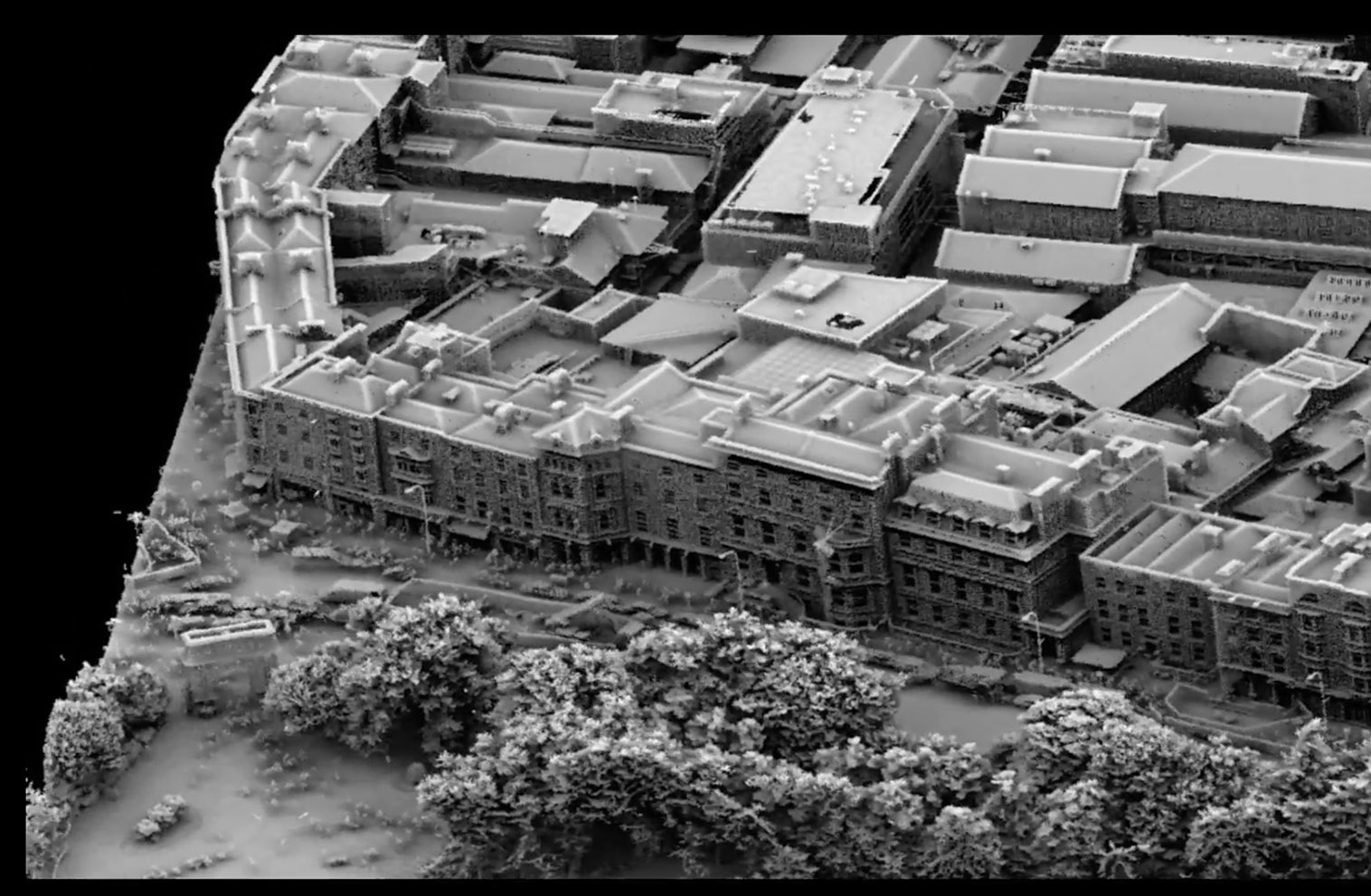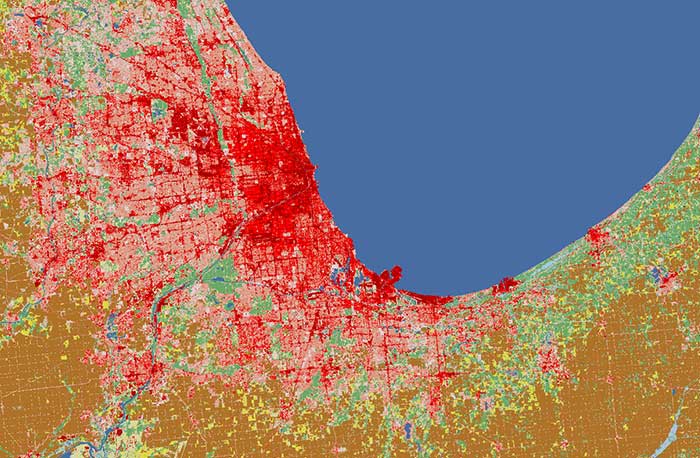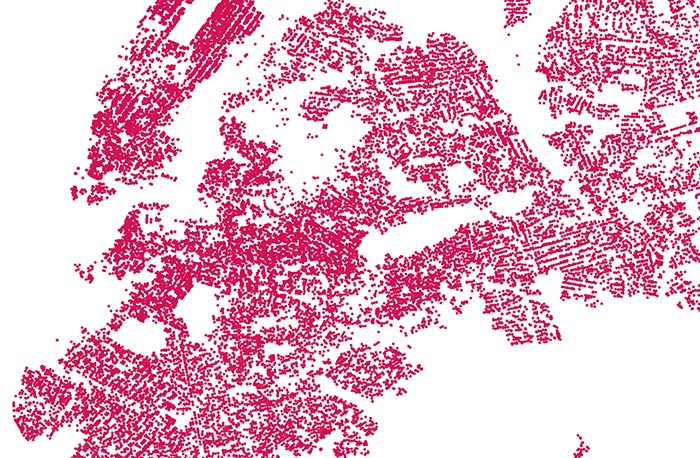View Metadata
Morphosculpture (point), 1996
- Identification Information
- Data Quality Information
- Spatial Data Organization Information
- Spatial Reference Information
- Entity and Attribute Information
- Distribution Information
- Metadata Reference Information
- Identification Information
- Citation
- Originator
- Environmental Systems Research Institute (Redlands, Calif.)
- Publication Date
- 1996
- Title
- Morphosculpture (point), 1996
- Geospatial Data Presentation Form
- vector digital data
- Series Information
- Series Name
- ArcAtlas
- Publication Information
- Publication Place
- Redlands, Calif.
- Publisher
- ESRI
- Online Linkage
- https://www1.columbia.edu/sec/acis/eds/dgate/studies/C1301/data/esri_1996_world_morphosculpturepoint.zip
- Abstract
- Morphosculpture (point), 1996 is a point theme representing morphosculpture worldwide. Attribute information indicates whether these features are Karst, tropical karst or degraded mountains.
- Purpose
- For educational, non-commercial purposes. This dataset is appropriate for use in a GIS.
- Supplemental Information
- Morphosculpture is the detailed shaping of the earth's landforms. Processes such as erosion and sedimentation are primarily responsible for morphosculpture. Landforms are classified and mapped by present-day natural and climatic zones. The climatic zones vary with latitude and altitude, paleogeographic features (relict elements or landforms), and trends of exogenic processes (accumulation or destruction). The underlying morphostructure also influences the resulting morphosculpture. The most important factors that sculpt the earth's landforms are running water (fluvial morphosculpture), ice (glacial and cryogenic morphosculpture), and wind (eolian and arid morphosculpture). Other important factors are easily soluble bedrock (karst) and gravity (talus). Fluvial morphosculpture is landforms shaped by accumulation and erosion of material caused by the action of water. Accumulation landforms are connected with areas of absolute or relative subsidence of the earth's crust, such as low plains. Erosion landforms, including young ones, pertain to uplifted areas such as highlands and mountains. Glacial and cryogenic morphosculpture is the result of both ancient glaciations and contemporary glacial and cryogenic phenomena. Special cryogenic morphosculpture is formed within present permafrost areas, both on mainland and island areas. It includes mound, polygonal, solifluction, icing, and nivation landforms. Arid morphosculpture is a set of ancient and present-day erosion and eolian landforms. Eolian accumulation and deflation forms of different ages are dominant. They are particularly pronounced in sand extratropical and tropical deserts, where the formation of eolian relief such as dunes has prevailed for a long time. Other morphosculptures include karst, polygenetic landforms of exogenic relief, which are developed in some areas and not directly connected with present-day and ancient geographical zones (Baer's mounds), and gravitation forms (talus).
- Temporal Extent
- Currentness Reference
- publication date
- Time Instant
- 1996
- Bounding Box
- West
- -180
- East
- 180
- North
- 85
- South
- -85
- Theme Keyword
- geoscientificinformation
- Theme Keyword Thesaurus
- ISO 19115 Topic Categories
- Theme Keyword
- Morphosculpture
- Theme Keyword Thesaurus
- None
- Place Keyword
- Earth
- Place Keyword Thesaurus
- Library of Congress Subject Headings
- Temporal Keyword
- 1996
- Temporal Keyword Thesaurus
- None
- Access Restrictions
- For current Columbia affiliates only.
- Use Restrictions
- For educational, non-commercial use only.
- Status
- Complete
- Maintenance and Update Frequency
- None planned
- Point of Contact
- Contact Organization
- ESRI
- Delivery Point
- 380 New York Street
- City
- Redlands
- State
- California
- Postal Code
- 92373-8100
- Country
- USA
- Contact Telephone
- 909-793-2853
- Contact Facsimile Telephone
- 909-793-5953
- Contact Electronic Mail Address
- info@esri.com
- Hours of Service
- 7:00 a.m.-5:30 p.m. Pacific time, Monday-Friday
- Native Data Set Environment
- Microsoft Windows XP Version 5.1 (Build 2600) Service Pack 3; ESRI ArcCatalog 9.3.1.1850
- Data Quality Information
- Lineage
- Spatial Data Organization Information
- Direct Spatial Reference Method
- Vector
- Point and Vector Object Information
- SDTS Terms Description
- SDTS Point and Vector Object Type
- Entity point
- Point and Vector Object Count
- 138
- Spatial Reference Information
- Horizontal Coordinate System Definition
- Geographic
- Latitude Resolution
- 0.000000
- Longitude Resolution
- 0.000000
- Geographic Coordinate Units
- Decimal degrees
- Geodetic Model
- Horizontal Datum Name
- D_Clarke_1866
- Ellipsoid Name
- Clarke 1866
- Semi-major Axis
- 6378206.400000
- Denominator of Flattening Ratio
- 294.978698
- Entity and Attribute Information
- Entity Type
- Entity Type Label
- m_sculpt_elemdd_point
- Attributes
- FID
- Internal feature number. (Sequential unique whole numbers that are automatically generated.)
- Definition Source
- ESRI
- Shape
- Feature geometry. (Coordinates defining the features.)
- Definition Source
- ESRI
- AREA
- Area
- PERIMETER
- Perimeter
- SAELEMDD_
- South America
- SAELEMDD_I
- South America
- ELEM_P
- Local superimposed landforms
- 48
- Karst
- 49
- Tropical Karst
- 50
- Degraded mountains
- POLYGONID
- Polygon ID
- SCALE
- Scale
- ANGLE
- Angle
- EUELEMDD_
- Europe
- EUELEMDD_I
- Europe
- AUELEMDD_
- Australia
- AUELEMDD_I
- Australia
- Entity and Attribute Overview
- Group 1. Inherited and present-day morphosculpture Subgroup 1. Fluvial morphosculpture Types: 1 Fluviomarine plains and deltas 2 Alluvial and lacustrine-alluvial plains 3 Alluvial plains 4 Lacustrine alluvial plains 5 Lacustrine plains 6 Alluvial-proluvial and proluvial plains 7 Plains of problematic genesis (glacial or marine) Subgroup 2. Denudation and erosion morphosculpture Types: 8 Deeply dissected (h 100 m) plains and plateaus 37 Deeply dissected (h 100 m) plains and plateaus with prevailing step-like and table landforms 9 Moderately dissected (h = 30 to 100 m) plains and plateaus; in South America, the features formed like "half oranges" 10 Slightly dissected (h 30 m) plains and plateaus 11 Deeply dissected (h 500 m) mountains 12 Moderately dissected (h 500 m) mountains Subgroup 3. Glacial and cryogenic morphosculpture Types: 102 Exaration and deposition relief of present-day glacial regions (ice sheets, glaciers) Subgroup 5. Morphostructure of different genesis Types: 13 Karst relief 14 Salt plains ("salari") 110 Coral islands Group 2. Relict morphologic structure differently transformed by recent processes Subgroup 3. Glacial and cryogenic morphosculpture Types: 15 Knob-and-kettle moraine relief (recent glacial deposition landforms) 16 Upland knob-and-kettle moraine relief (recent glacial deposition landforms) 17 Glacial deposition relief transformed by erosion and cryogenic processes 18 Upland glacial deposition relief transformed by erosion and cryogenic processes 19 Glaciolacustrine relief 20 Fluvioglacial relief (prevailing outwash plains) 21 Moraine plans with ridges and depressions 22 Moraine plains with ridges and hills 23 Large residual hills formed by exaration 24 Small hills formed by exaration and denudation at thick moraine cover 25 Smoothed exaration-denudation relief at thick moraine cover 26 Structural denudation relief eroded by exaration at thin moraine cove 27 Structural denudation relief eroded by exaration at prevailing glaciolacustrine deposits 28 Plains and tablelands with exaration landforms 29 Exaration and deposition relief formed by mountain glaciation and transformed by frost, nivation, and gravitation 30 Exaration and deposition relief formed by mountain glaciation and transformed by frost, nivation, and gravitation at thick moraine cover 31 Relief of various exaration landforms 32 Glacial deposition and fluvial relief of piedmont plains Subgroup 1. Fluvial morphosculpture 33 Marine and abrasion plains and terraces 34 Alluvial plains 35 Alluvial and lacustrine-alluvial plains Subgroup 4. Arid (eolian) morphosculpture 36 Dunes No data code 110 No data for coral islands
- Distribution Information
- Format Name
- geopackage
- Distributor
- ESRI; ESRI International Distributors
- Name
- Metadata Reference Information
- Metadata Date
- 20090701
- Metadata Contact
- Contact Information
- Contact Organization Primary
- Contact Organization
- Research Data Services (RDS), Columbia University Libraries
- Contact Person
- GIS/Metadata Librarian
- Contact Address
- Address
- 420 W. 118th St. 215 IAB, MC 3301
- City
- New York
- State or Province
- NY
- Postal Code
- 10027
- Country
- USA
- Contact Voice Telephone
- (212) 854-6012
- Contact Electronic Mail Address
- data@library.columbia.edu
- Hours of Service
- 7:00 a.m.-5:30 p.m. Pacific time, Monday-Friday
- Metadata Standard Name
- FGDC Content Standards for Digital Geospatial Metadata
- Metadata Standard Version
- FGDC-STD-001-1998


